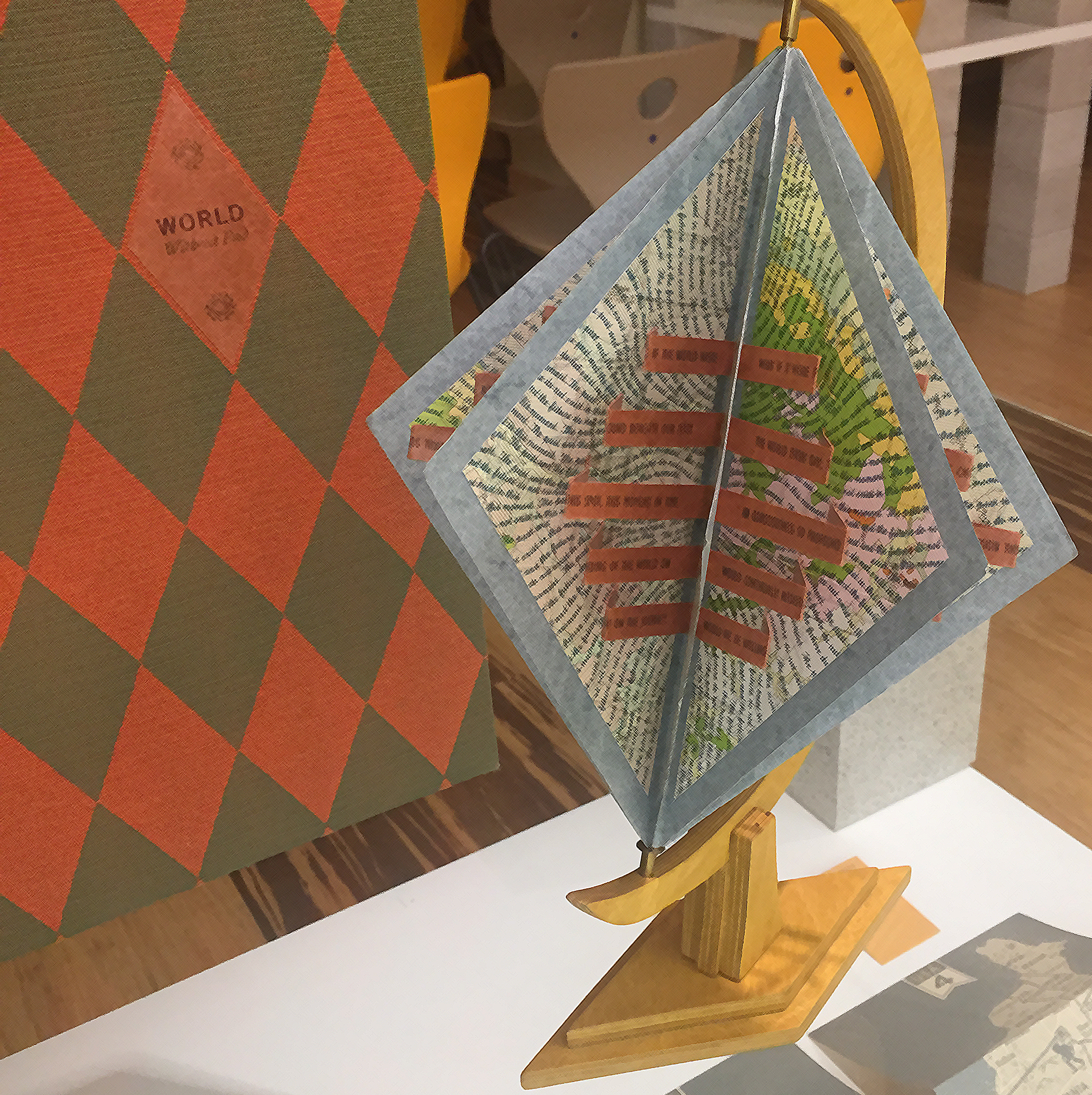Books as Aesthetic Objects


By Clifton Meador
2007
Some voiceless, inanimate objects have the remarkable quality of making you hear sound when there is no sound. Maya Lin’s Vietnam Memorial, for example, begins quietly with an inscribed name, then two, then multiples on multiples until, when you reach the angle formed by the two murmurous walls, all the names cry out of the silence.
In a very different way, Clifton Meador’s book Kora creates a reality invoking hearing when in fact it is ‘only’ a compendium of 3-part panoramic photographs and ingenious print. On the verso of the title page there are two statements:
Walking clockwise around the building.
Everyday they were walking around the building.
The procession of photographed images then begins. Against the red of the walls, each of the 26 pages captures the march of the pilgrims: what I “hear” are quiet footfalls, the whirling of prayer wheels held high, the susurrus of spoken mantras. Women in long skirts, men, and even children are walking, some wearing white hats like fedoras, some dressed in red robes with golden hats. On page 17, a man is walking counter-clockwise. The text tells us he is a tourist.
If you are where the book takes us, you can not only see the procession, you might sniff the odor that wafts from the building:
The blocks are preserved by soaking them in butter, and storing them on shelves.
The wind blows through the open windows
Carrying the smell of the butter-soaked blocks outside the building.
On the website, Clifton Meador makes a personal statement about the book: "For an artist like myself, where the printing of a book is an integral, creative part of the process, this appreciation for the printing of books is deeply moving. I know that the Tibetans revere the Parkhang from a sense of religious devotion, and that my work is deeply secular, but I was moved and impressed that a group of people could care so deeply about printing. As I stood there watching them, they seemed to embody the language of the books inside the Parkhang. I decided to make a digital font of line drawings of the pilgrims: a literal transformation of the pilgrims into text, at least in the context of this artists’ book."
Through his unique chronicling of an ancient art form, a form that is still being used, Clifton Meador stretches his imaginings about printing and reading to impress and engage other senses as well; above all, the sense of wonder.
- Judith Klau